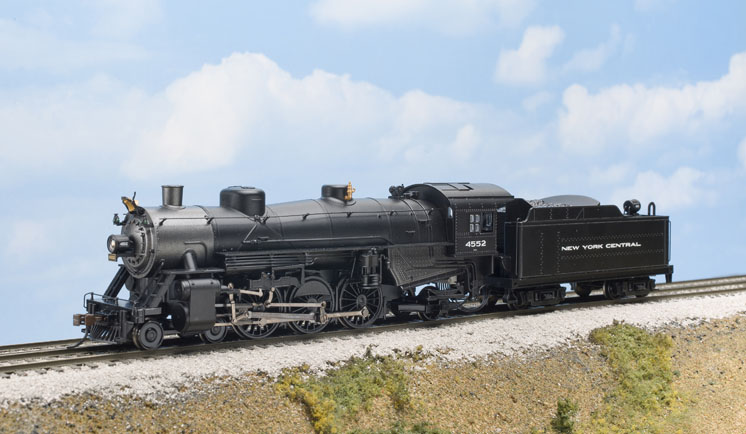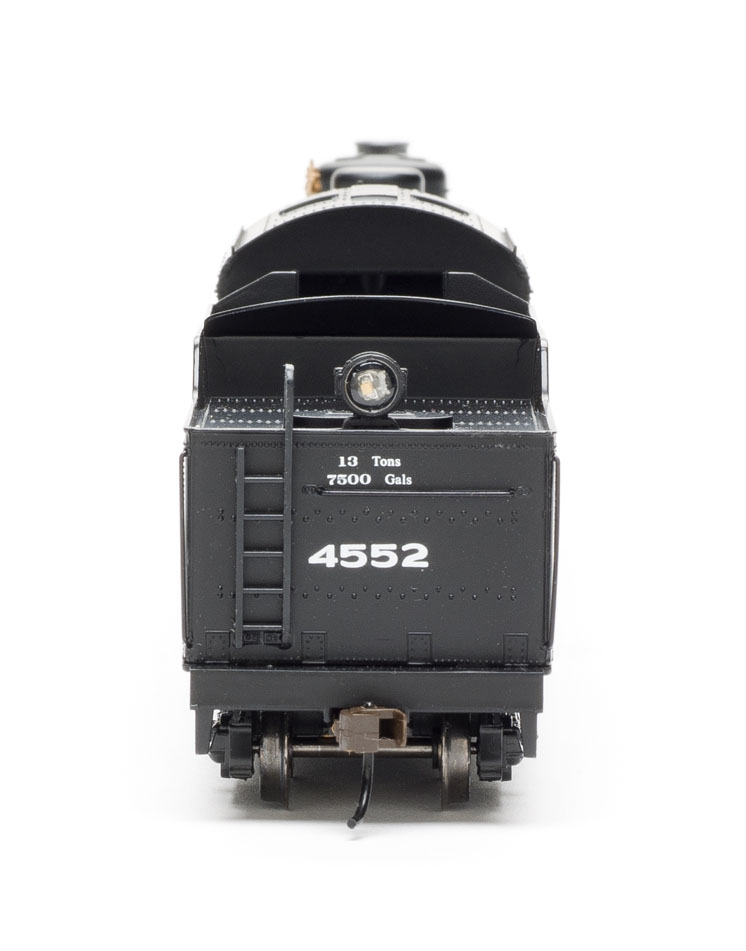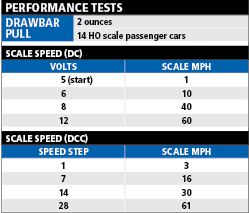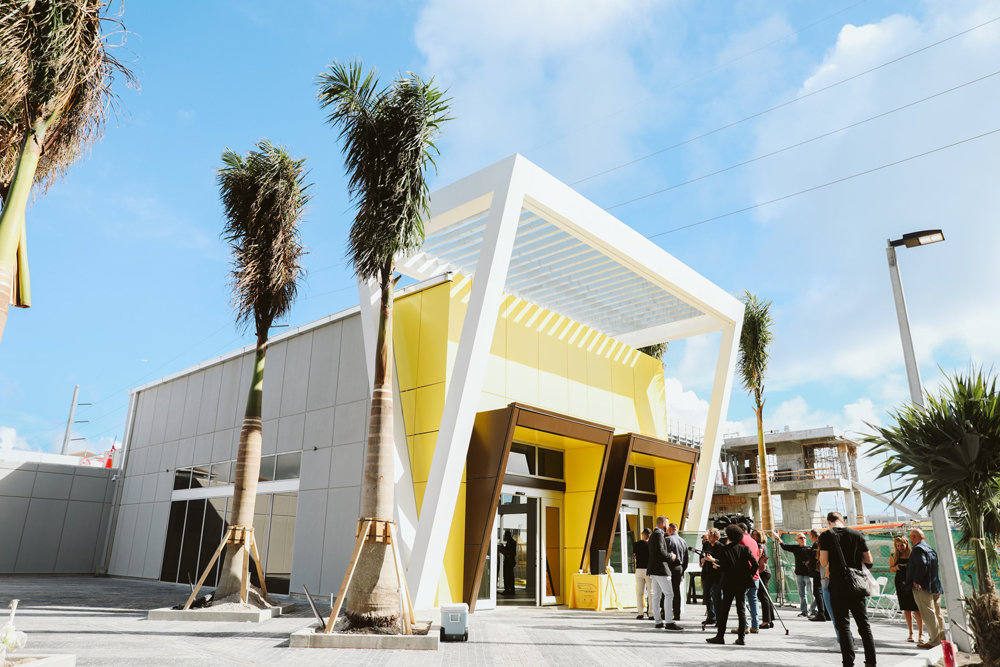A passenger workhorse of the steam era joins Bachmann Trains’ HO scale SoundValue lineup with this United States Railway Administration (USRA) light 4-6-2 Pacific. The plastic and die-cast metal locomotive features a dual-mode SoundTraxx decoder that delivers a variety of sound effects on direct-current (DC) and Digital Command Control (DCC) layouts.
Prototype(s). The light 4-6-2 Pacific was one of the standard steam locomotive designs developed by the USRA when U.S. railroads were nationalized during World War I. Only 81 light Pacifics were built under USRA control. These were delivered in 1919 to three railroads: the Atlantic Coast Line, Baltimore & Ohio, and Louisville & Nashville. After the USRA was dissolved in 1920, all three railroads as well as the Grand Trunk Western and Mobile & Ohio ordered additional locomotives built to the USRA light Pacific design.
The Bachmann model’s dimensions match a prototype drawing of a USRA light Pacific in the Model Railroader Cyclopedia: Vol. 1, Steam Locomotives (Kalmbach Publishing Co.). The distance between the tender and cab deck is two scale feet too wide, which lets the model negotiate 18″ radius curves.
Our review sample is decorated as New York Central no. 4552, a class K-11e Pacific built in 1912 as no. 3152 that was renumbered in 1936 and retired in 1951. The K-11 Pacifics were versatile locomotives, used by the Central for commuter operations, way freights, and even switching in addition to hauling mainline varnish.
Studying drawings in an NYC locomotive diagram book, as well as prototype photos of no. 4552, I could see how a class K-11e had similar proportions to a USRA light Pacific. Many of the dimensions, including driver axle spacing are within a few scale inches.
Since it accurately models a USRA light Pacific, the Bachmann model features the 73″ drivers of that prototype vs. the 69″ drivers of the NYC K-11. The USRA 4-6-2 is also a couple scale feet longer and a several scale inches taller than the K-11e. Bachmann’s Pacific has Baker valve gear, which was included on some USRA light Pacifics. However the NYC K-11s had Walschaerts valve gear.
I did appreciate that Bachmann added Commonwealth four-wheel trucks to the tender, which better match the prototype photos of NYC K-11e no. 4552.
Model construction. The model’s plastic boiler and tender body feature well-defined molded detail, including boiler bands, sand lines, and rivet seams. Handrails, uncoupling levers, and air piping are separate wire parts. The tender also features a separately applied ladder on the rear.
The metal locomotive and tender wheels have black-painted centers. All the wheels are in gauge. None of the drivers have traction tires. The running gear, including the siderods and alligator crossheads, are chemically blackened metal parts.
There are no figures in the cab, but the backhead features a firedoor and other molded detail. All the windows have clear glazing.
The model is painted in a smooth satin-finish black with a graphite-colored firebox and smokebox. All the lettering is straight and placed correctly per prototype photos of no. 4552, including the “K-11e” under the road number.
A flywheel-equipped can motor is housed inside the plastic locomotive boiler. Most of the locomotive’s 13-ounce weight comes from its die-cast metal chassis and wheels. A gear tower connects the motor to the second driver axle, while metal siderods transfer power to the other drivers.
The decoder and speaker are inside the tender. A wiring harness from the tender plugs into an 8-pin socket under the locomotive cab.
Lights and sound. The dual-mode SoundTraxx SoundValue decoder has most of the features of a top-of-the-line Tsunami decoder. A list of programmable configuration variables (CVs) is available under “Parts, Service & Information” at www.bachmanntrains.com. Programming guides are also available at www.soundtraxx.com.
During both DC and DCC operation, the headlights and backup lights are illuminated and set to dim. The appropriate light brightens according to direction. This is correct when the locomotive is running light. However, the backup light should be off when the locomotive moves forward with a train in tow.
There’s no way to shut the lights off in DC, but I could turn the lights on or off with a function button in DCC. I could also program the lights for more realistic independent control.
In DC, sound is limited to automatic effects, including the exhaust chuffs and air pump. The bell sounded at speeds less than about 15 scale mph, and the whistle sounded a grade-crossing signal whenever I quickly increased the throttle. These effects can be changed or shut off, but to do so requires a DCC system, an MRC Tech 6, or other DC sound controller. The sound momentarily cut out whenever I flipped the direction switch. Unfortunately, there’s no programming fix for that.
I had more control over the sound and performance of the model with a DCC system. User-triggered functions include the bell, whistle, and a steam release. The functions can also be remapped. The SoundValue decoder doesn’t have the Tsunami’s “Train Brake” feature, so I couldn’t set up a function button to stop the train independent of the throttle setting.
Since the locomotive doesn’t use an axle-mounted cam switch to mechanically synchronize the chuff sound to the driver rotation, I had to fine-tune the exhaust chuffs using CV116 to get close to the correct four chuffs per wheel revolution. I also couldn’t adjust the throttle- or load-sensitivity of the exhaust. If I wanted to simulate the locomotive drifting downhill, which meant the engine wouldn’t be working any steam, I had to set the exhaust volume (CV131) to zero first.
The SoundValue decoder includes many of the Tsunami’s most useful features, such as independent volume control for each sound effect as well as preset and user-programmable speed tables. I easily changed the decoder’s address to match its road number and added deceleration and acceleration momentum for more realistic stops and starts.
This latest steam addition to the SoundValue roster accurately models a USRA light Pacific and provides a credible stand-in for a New York Central 4-6-2. With its whistle blowing and exhaust chuffing, it would be right at home hauling a string of heavyweights around an HO layout.
Price: $399
Manufacturer
Bachmann Industries Inc.
1400 E. Erie Ave.
Philadelphia, PA 19124
www.bachmanntrains.com
Era: 1920s to 1950s (as detailed)
Road names: New York Central; Atchison, Topeka & Santa Fe; Baltimore & Ohio; Grand Trunk Western; and Union Pacific
Features
▪▪Blackened metal wheels in gauge
▪▪Can motor with brass flywheel
▪▪Die-cast metal chassis
▪▪Electrical pickup on six locomotive drivers and all tender wheels
▪▪Light-emitting diode (LED) headlight and backup light
▪▪Minimum radius: 18″
▪▪Plastic E-Z Mate Mark II knuckle couplers at correct height
▪▪SoundTraxx SoundValue dual-mode sound decoder
▪▪Weight: 1 pound (engine and tender); 13 ounces (engine alone)


















It seems like its missing the pop valves, which wasn’t missing on Bachmann’s 2-8-2 mik.
Could you please provide the correct setting you used for CV 116?
Thanks, J. West
Hi, thanks for this review. As BLI also make a USRA light pacific it would be most useful if you compared the two. In particular, the current BLI version has Paragon 2 sound, and the version slated for March 2017 will have Paragon 3 sound “with Rolling Thunder”, but the MSRP for the old and new BLI models is $349.99, i.e. $50 less than the Bachmann, which just has “Sound Value”. So the comparative accuracy and quality of other aspects of the models is a very real question. Fortunately the BLIs I have on pre-order are for the ACL, which you do not list for Bachmann, but even so it would be nice to know how they compare.
Best Regards,
Bill.